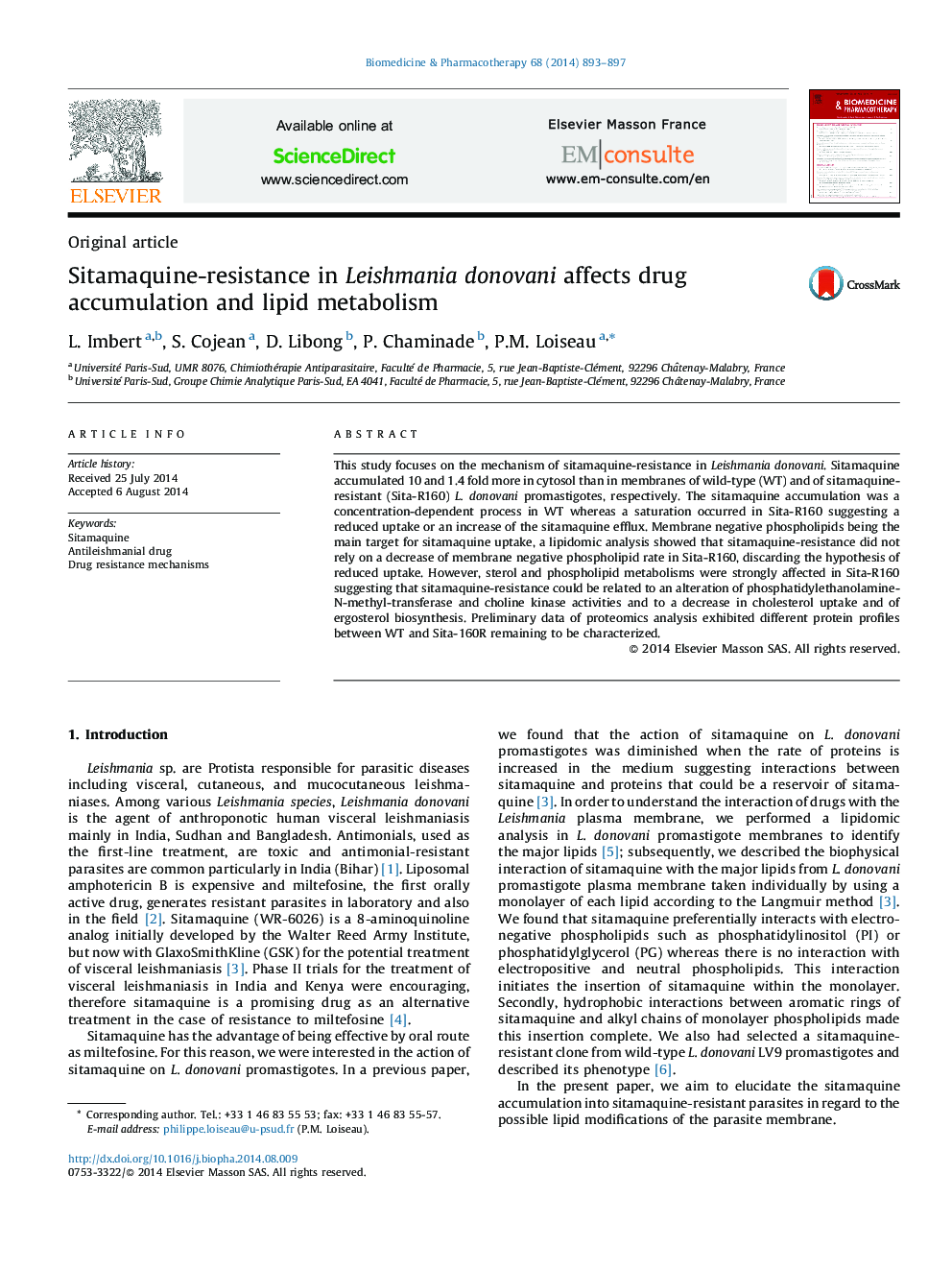| Article ID | Journal | Published Year | Pages | File Type |
|---|---|---|---|---|
| 2524206 | Biomedicine & Pharmacotherapy | 2014 | 5 Pages |
This study focuses on the mechanism of sitamaquine-resistance in Leishmania donovani. Sitamaquine accumulated 10 and 1.4 fold more in cytosol than in membranes of wild-type (WT) and of sitamaquine-resistant (Sita-R160) L. donovani promastigotes, respectively. The sitamaquine accumulation was a concentration-dependent process in WT whereas a saturation occurred in Sita-R160 suggesting a reduced uptake or an increase of the sitamaquine efflux. Membrane negative phospholipids being the main target for sitamaquine uptake, a lipidomic analysis showed that sitamaquine-resistance did not rely on a decrease of membrane negative phospholipid rate in Sita-R160, discarding the hypothesis of reduced uptake. However, sterol and phospholipid metabolisms were strongly affected in Sita-R160 suggesting that sitamaquine-resistance could be related to an alteration of phosphatidylethanolamine-N-methyl-transferase and choline kinase activities and to a decrease in cholesterol uptake and of ergosterol biosynthesis. Preliminary data of proteomics analysis exhibited different protein profiles between WT and Sita-160R remaining to be characterized.
